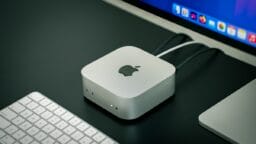Apple’s Summer Quarter Exceeds Expectations Amidst Trade Turmoil
In an impressive display of resilience, Apple announced financial results for its summer quarter that surpassed analyst forecasts, even as the company finds itself entangled in a global trade skirmish and striving to keep pace with its Big Tech counterparts in the burgeoning artificial intelligence arena.
The announcement made on Thursday was predominantly fueled by robust early interest in the newly released iPhone 17 lineup, which hit the market last month.
Though the iPhone 17 may not boast the AI sophistication evident in recent releases from Samsung and Google, Apple has adorned its latest models with a fresh design featuring an elegant “liquid glass” finish on the display.
Remarkably, Apple managed to largely maintain its pricing strategy for the new iPhones, even as it grapples with tariffs imposed by former President Donald Trump, affecting devices predominantly manufactured in India and China.
These tariffs have burdened Apple with $1.1 billion in costs during the last quarter, with estimates suggesting an additional $1.4 billion hit in the upcoming final quarter of the year.
This strategy appears to have resonated with consumers, particularly in the United States and Europe, culminating in a total of $49 billion in iPhone sales for the July-September period—a 6% rise compared to the same interval last year.
Although this figure merely aligns with analyst expectations of an 8% increase, it pales in comparison to the 13% surge experienced during the previous April-June period.
According to IDC, approximately 58.6 million iPhones were sold globally within this quarter, positioning Apple behind Samsung, which saw sales of 61.4 million Android devices.
Propelled by these results, Apple reported earnings of $27.5 billion, equating to $1.85 per share, nearly doubling profits from the previous year. Revenue soared by 8%, hitting $102.5 billion, with both earnings and revenue eclipsing analyst projections.
Following these revelations, Apple’s stock experienced a 3% uptick in after-hours trading.
In a subsequent conference call, CEO Tim Cook expressed optimism regarding the iPhone 17’s future performance, forecasting even stronger sales in the final quarter.
“As we approach the holiday season with our most formidable lineup ever, I am enthusiastic about what lies ahead,” stated Cook. He pointed out the device’s popularity in most global markets, save for China, where sales dipped by 4% compared to last year.
Apple anticipates a minimum 10% increase in iPhone sales during this holiday season, a projection confirmed by CFO Kevan Parekh, who also expects total revenue to rise at a similar rate.
Apple’s stock trajectory has been strong since a recent report from International Data Corp., which hinted at record-breaking iPhone sales for the July-September quarter. This rally propelled Apple’s market capitalization beyond $4 trillion, establishing the ground for further highs during Friday’s trading session.
Nevertheless, Apple has garnered criticism for its lagging position in the AI sector. This slow response has contrasted sharply with the rapid ascent of Nvidia, a chipmaker recently valued at $5 trillion.

Apple had originally promised a range of AI functionalities for its last year’s iPhone models, but only managed to roll out a handful of these upgrades. Notably absent was a more capable iteration of its often perplexing Siri virtual assistant, a transformation that is unlikely to materialize before next year.
Historically, Apple has frequently faced criticism for being slow to adapt to emerging technologies before ultimately catching up and establishing itself as a market leader.
If the company can successfully implement additional AI features in future iPhone models, Wedbush Securities analyst Dan Ives postulates that these advancements could enhance Apple’s market share by an estimated $1 trillion to $1.5 trillion, translating to an increase in share price of $75 to $100.
Source link: Fastcompany.co.za.






